What Is Nail Buffing?
Nail buffing is one of the best-kept shiny nail secrets. It refers to polishing or rubbing your nails with a sanding block (nail buffer) that’s made of fine grit. This leaves your nails looking smoother and shinier.
How To Buff Nails At Home?
Make sure your nails are dry and clean – wet nails can break or chip easily Use a nail polish remover to remove any traces of nail paint Trim your nails to a desired length File your nails in a shape that you want – round, square or whatever suits you. Get a nail buffer – this can either be a sanding block or a nail buffer and will have different textures on the sides. Using the roughest side of the buffer, buff your nails gently, moving the buffer from side-to-side. Try and remove the roughness from your nails first. Take a soft cotton cloth to wipe off the extracts Now take the texture that’s a little less rough and repeat the steps in a gentle, side-to-side motion. Take the smoothest part of the buffer and buff your nails until they look shiny – as if you’ve applied a clear coat. Wipe off your nails with the cotton cloth
Louise Antonette, a blogger, follows a three-step buffing routine that includes managing ridges, smoothing out the scratches, and making the nails shine. She shares in one of her blog posts, “After doing steps 1 to 3 I instantly got glossy nails. The shine could last a week or more. This practically saves me hundreds of pesos I usually spend when going to a salon to have my nails done (i).” Can you do nail buffing without a buffer? Let us find that out here.
How To Buff Nails Without A Buffer?
Yes, you can buff your nails even if you do not have a buffer. Here is how:
Soak your nails in warm water for around 5 minutes. Dip a soft-bristle toothbrush into nail polish remover or acetone. Brush your nails’ surface to eliminate any lingering bubbles from previous polishing. Take an old T-shirt or a microfiber cloth and buff the nails. Use a lint-free wipe or cotton balls soaked in nail polish remover to cleanse nails, removing excess acetone and oils.
If necessary, repeat steps 2 to 4 until your nails achieve the desired level of smoothness.
How Often to Buff Nails?
You can buff your nails once a week to enhance their beauty or every time you do a pedicure or manicure at home. It will help keep your nails stain-free from nail polish and smooth!
Different Nail Buffing Tools In The Market
1. Nail Buffer/Sanding Block
These have a higher grit and are more gentle and can also help shape your nails to some extent.
2. Nail Buffer Board
These are generally made of fine-grade sand-paper and help smoothen out any rough edges on nails.
3. Cute Nail Buffers In Various Shapes
These are generally smaller than the regular boards, can be popped inside your tote and are easy to use.
4. Nail Buffing Blocks
These are 3-dimensional buffing blocks that are rectangular in shape and come with a different texture on both sides to help smoothen out rough edges and bring a shine on the nails.
5. Nail Buffer Strips
These are more like papery strips made of sand-paper and do the same work as the emery board, buffing wheel, or nail buff, but are used more as a replacement in case you’re not carrying those around with you. Great for travel.
Does Nail Buffing Increase Hair Growth?
There is no concrete proof that nail buffing increases hair growth. However, it is a proven fact that rubbing the nails of your left and right hand together can actually lead to hair growth.
A Few Things To Keep In Mind About Nail Buffing
Nail buffing is an important part of keeping your nails healthy. Therefore, it should be a part of the nail care tips and tricks you follow daily. Here are a few things to keep in mind when buffing your nails:
Rubbing thumbnails will increase growth of facial hairs, so don’t rub your thumbs Do not rub your nails during pregnancy as it can cause uterine contractions and lead to high blood pressure Avoid during surgical conditions Avoid in case of any skin infections Avoid if nails are brittle Avoid if you are currently suffering, or have suffered in the past from hypertension, as this can lead to increased blood pressure Do not overdo, as it can harm nails Do this only for 5-10 minutes a day, twice a day for better results, but not more
Does buffing strengthen nails? Yes. Buffing improves the blood circulation under the nail bed, boosting nail growth and shine. However, you shouldn’t buff more than once a month, as overdoing it can make your nails brittle. Should I buff my nails before gel polish? Yes. Buffing your nails before applying gel polish or nail art ensures that the nail is smooth enough for the application and that the gel can bond with it. Why do nail salons buff nails? Nail salons buff nails to cover any ridges and cracks and make the nails look smoother and shinier. Image source: 1 , 2 , 3 , 4 , 5
Illustration: What Is Nail Buffing? How To Buff Nails At Home?
Check out the video below to get tips on the best techniques for buffing and polishing your nails and get ready to flaunt those glossy nails!
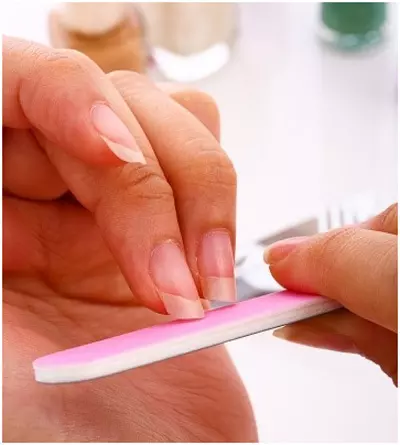
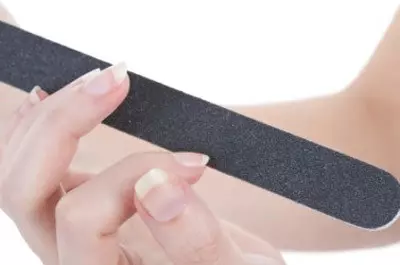
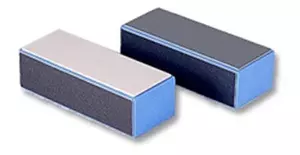
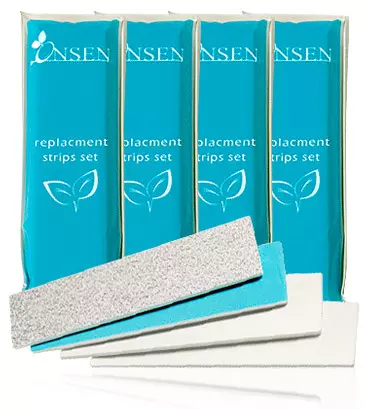
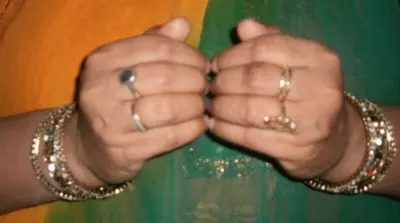

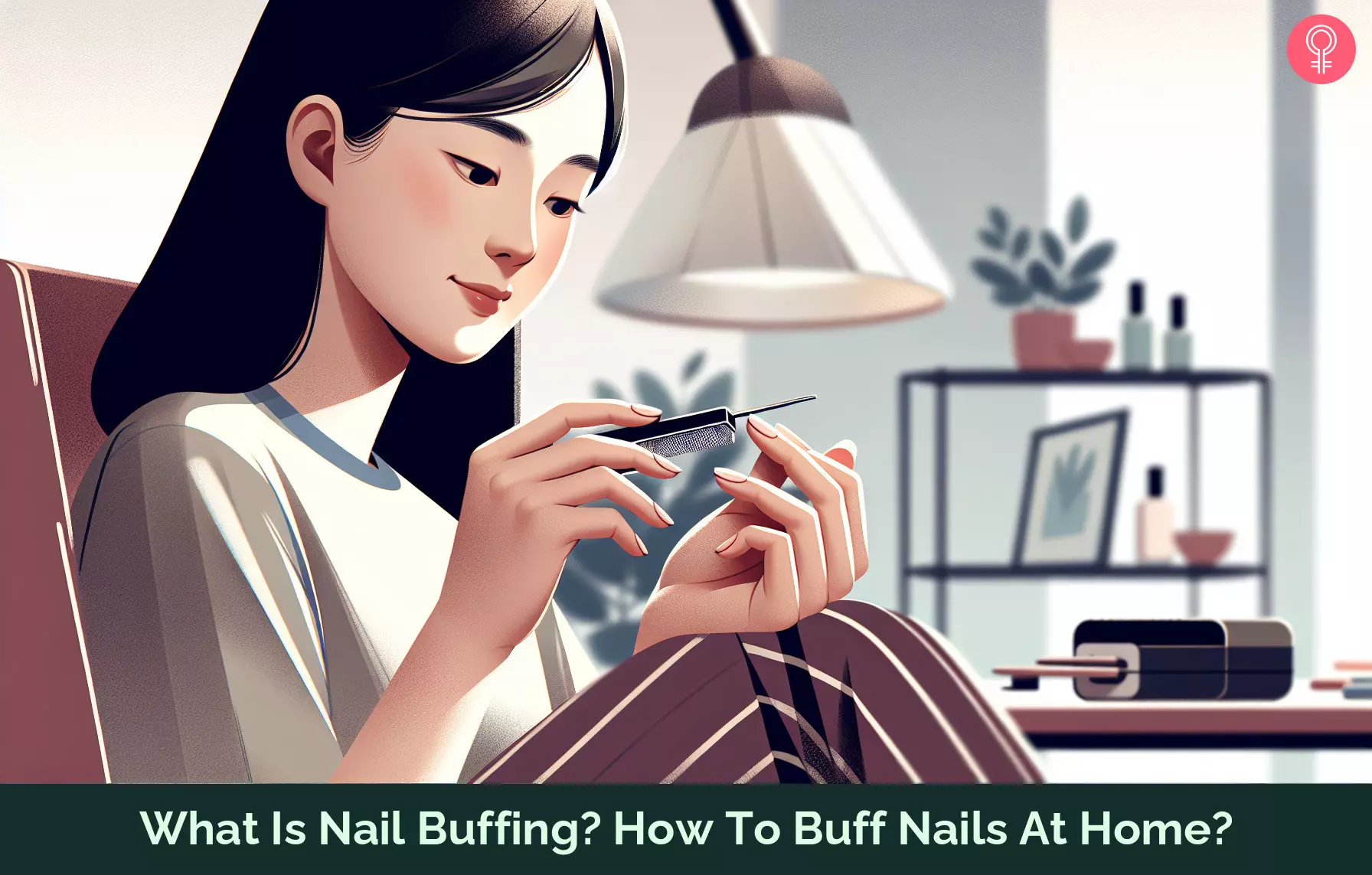






title: “What Is Nail Buffing How To Buff Nails At Home " ShowToc: true date: “2024-10-12” author: “Annie Harris”
What Is Nail Buffing?
Nail buffing is one of the best-kept shiny nail secrets. It refers to polishing or rubbing your nails with a sanding block (nail buffer) that’s made of fine grit. This leaves your nails looking smoother and shinier.
How To Buff Nails At Home?
Make sure your nails are dry and clean – wet nails can break or chip easily Use a nail polish remover to remove any traces of nail paint Trim your nails to a desired length File your nails in a shape that you want – round, square or whatever suits you. Get a nail buffer – this can either be a sanding block or a nail buffer and will have different textures on the sides. Using the roughest side of the buffer, buff your nails gently, moving the buffer from side-to-side. Try and remove the roughness from your nails first. Take a soft cotton cloth to wipe off the extracts Now take the texture that’s a little less rough and repeat the steps in a gentle, side-to-side motion. Take the smoothest part of the buffer and buff your nails until they look shiny – as if you’ve applied a clear coat. Wipe off your nails with the cotton cloth
Louise Antonette, a blogger, follows a three-step buffing routine that includes managing ridges, smoothing out the scratches, and making the nails shine. She shares in one of her blog posts, “After doing steps 1 to 3 I instantly got glossy nails. The shine could last a week or more. This practically saves me hundreds of pesos I usually spend when going to a salon to have my nails done (i).” Can you do nail buffing without a buffer? Let us find that out here.
How To Buff Nails Without A Buffer?
Yes, you can buff your nails even if you do not have a buffer. Here is how:
Soak your nails in warm water for around 5 minutes. Dip a soft-bristle toothbrush into nail polish remover or acetone. Brush your nails’ surface to eliminate any lingering bubbles from previous polishing. Take an old T-shirt or a microfiber cloth and buff the nails. Use a lint-free wipe or cotton balls soaked in nail polish remover to cleanse nails, removing excess acetone and oils.
If necessary, repeat steps 2 to 4 until your nails achieve the desired level of smoothness.
How Often to Buff Nails?
You can buff your nails once a week to enhance their beauty or every time you do a pedicure or manicure at home. It will help keep your nails stain-free from nail polish and smooth!
Different Nail Buffing Tools In The Market
1. Nail Buffer/Sanding Block
These have a higher grit and are more gentle and can also help shape your nails to some extent.
2. Nail Buffer Board
These are generally made of fine-grade sand-paper and help smoothen out any rough edges on nails.
3. Cute Nail Buffers In Various Shapes
These are generally smaller than the regular boards, can be popped inside your tote and are easy to use.
4. Nail Buffing Blocks
These are 3-dimensional buffing blocks that are rectangular in shape and come with a different texture on both sides to help smoothen out rough edges and bring a shine on the nails.
5. Nail Buffer Strips
These are more like papery strips made of sand-paper and do the same work as the emery board, buffing wheel, or nail buff, but are used more as a replacement in case you’re not carrying those around with you. Great for travel.
Does Nail Buffing Increase Hair Growth?
There is no concrete proof that nail buffing increases hair growth. However, it is a proven fact that rubbing the nails of your left and right hand together can actually lead to hair growth.
A Few Things To Keep In Mind About Nail Buffing
Nail buffing is an important part of keeping your nails healthy. Therefore, it should be a part of the nail care tips and tricks you follow daily. Here are a few things to keep in mind when buffing your nails:
Rubbing thumbnails will increase growth of facial hairs, so don’t rub your thumbs Do not rub your nails during pregnancy as it can cause uterine contractions and lead to high blood pressure Avoid during surgical conditions Avoid in case of any skin infections Avoid if nails are brittle Avoid if you are currently suffering, or have suffered in the past from hypertension, as this can lead to increased blood pressure Do not overdo, as it can harm nails Do this only for 5-10 minutes a day, twice a day for better results, but not more
Does buffing strengthen nails? Yes. Buffing improves the blood circulation under the nail bed, boosting nail growth and shine. However, you shouldn’t buff more than once a month, as overdoing it can make your nails brittle. Should I buff my nails before gel polish? Yes. Buffing your nails before applying gel polish or nail art ensures that the nail is smooth enough for the application and that the gel can bond with it. Why do nail salons buff nails? Nail salons buff nails to cover any ridges and cracks and make the nails look smoother and shinier. Image source: 1 , 2 , 3 , 4 , 5
Illustration: What Is Nail Buffing? How To Buff Nails At Home?
Check out the video below to get tips on the best techniques for buffing and polishing your nails and get ready to flaunt those glossy nails!












